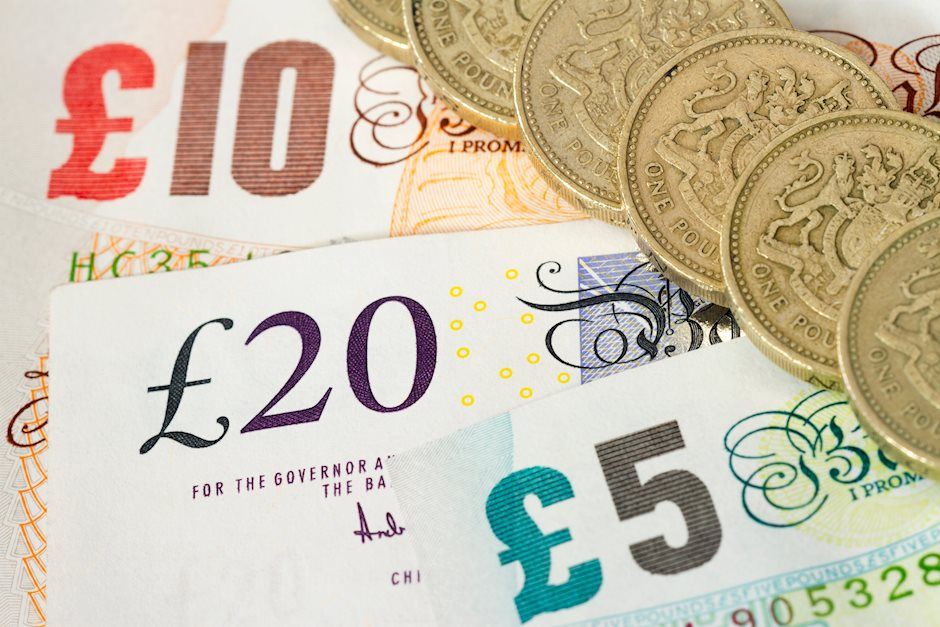Pound Sterling rebounds as soft US inflation data improves market sentiment
- Pound Sterling recovers as investors' risk appetite improves after soft US core PCE inflation data.
- As expected, the US core PCE Price Index grew moderately by 2.8% in January.
- In the UK, BoE policymakers need more evidence of inflation easing to 2% before initiating rate cuts.

The Pound Sterling (GBP) rebounds strongly as market sentiment improves in Thursday’s early New York session. Investors' appetite for risk-sensitive currencies improved as the annual United States core Personal Consumption Expenditure Price Index (PCE) grew at a slower pace of 2.8% in January, as forecasted by investors. In December, the underlying inflation data increased by 2.9%.
Federal Reserve (Fed) policymakers closely track the underlying inflation data to prepare a fresh outlook on interest rates. A decline in price pressures in the US economy would increase hopes of rate cuts by the Fed in the June policy meeting.
The GBP/USD pair oscillates inside Wednesday’s trading range as uncertainty over the timing of Bank of England (BoE) rate cuts keeps the Pound Sterling on the sidelines. BoE policymakers are reluctant to reduce interest rates early as it could stall progress in inflation declining towards the 2% target, or price pressures could flare up again.
Daily Digest Market Movers: Pound Sterling bounces back while US Dollar drops
- Pound Sterling rebounds from 1.2630 as soft United States core PCE Price Index for January has improved the risk appetite of market participants.
- On a broader note, the Pound Sterling is expected to outperform the US Dollar as investors hope that the Bank of England will pivot to rate cuts later than the Fed.
- Core consumer price inflation in the United Kingdom economy is at 5.1%, the highest in the Group of Seven economies, which would force BoE policymakers to maintain a hawkish monetary policy stance for a longer period.
- This week, BoE Deputy Governor Dave Ramsden said he wants to see how long inflation will remain persistent before considering a change in the monetary policy stance. In the last monetary policy meeting, Ramsden voted for holding interest rates at 5.25%.
- UK’s stubborn core inflation has been prompted by solid wage growth and high service inflation. However, annual shop price inflation has retreated to 2.5% in February due to weak growth in food items, the lowest since March 2022, which seems to offer some relief to households. The shop price index tracks price changes in food and non-food items.
- Meanwhile, the BoE has announced that Clare Lombardelli to succeed Ben Broadbent as deputy governor for monetary policy from July 2024, MACE news reported.
Technical Analysis: Pound Sterling approaches 1.2700
Pound Sterling oscillates in a tight range around 1.2670. The GBP/USD pair continues to face stiff resistance near the downward-sloping border of the Descending Triangle pattern formed on a daily timeframe, placed from December 28 high at 1.2827. While, the horizontal support is plotted from December 13 low near 1.2500.
A Descending Triangle pattern exhibits indecisiveness among market participants but with a slight downside bias due to lower highs and flat lows formation.
The pair holds above the 20-day Exponential Moving Average (EMA), which trades around 1.2650. Meanwhile, the 14-period Relative Strength Index (RSI) remains within the 40.00-60.00 range, indicating a sharp volatility contraction.
Inflation FAQs
What is inflation?
Inflation measures the rise in the price of a representative basket of goods and services. Headline inflation is usually expressed as a percentage change on a month-on-month (MoM) and year-on-year (YoY) basis. Core inflation excludes more volatile elements such as food and fuel which can fluctuate because of geopolitical and seasonal factors. Core inflation is the figure economists focus on and is the level targeted by central banks, which are mandated to keep inflation at a manageable level, usually around 2%.
What is the Consumer Price Index (CPI)?
The Consumer Price Index (CPI) measures the change in prices of a basket of goods and services over a period of time. It is usually expressed as a percentage change on a month-on-month (MoM) and year-on-year (YoY) basis. Core CPI is the figure targeted by central banks as it excludes volatile food and fuel inputs. When Core CPI rises above 2% it usually results in higher interest rates and vice versa when it falls below 2%. Since higher interest rates are positive for a currency, higher inflation usually results in a stronger currency. The opposite is true when inflation falls.
What is the impact of inflation on foreign exchange?
Although it may seem counter-intuitive, high inflation in a country pushes up the value of its currency and vice versa for lower inflation. This is because the central bank will normally raise interest rates to combat the higher inflation, which attract more global capital inflows from investors looking for a lucrative place to park their money.
How does inflation influence the price of Gold?
Formerly, Gold was the asset investors turned to in times of high inflation because it preserved its value, and whilst investors will often still buy Gold for its safe-haven properties in times of extreme market turmoil, this is not the case most of the time. This is because when inflation is high, central banks will put up interest rates to combat it.
Higher interest rates are negative for Gold because they increase the opportunity-cost of holding Gold vis-a-vis an interest-bearing asset or placing the money in a cash deposit account. On the flipside, lower inflation tends to be positive for Gold as it brings interest rates down, making the bright metal a more viable investment alternative.
Author

Sagar Dua
FXStreet
Sagar Dua is associated with the financial markets from his college days. Along with pursuing post-graduation in Commerce in 2014, he started his markets training with chart analysis.

















